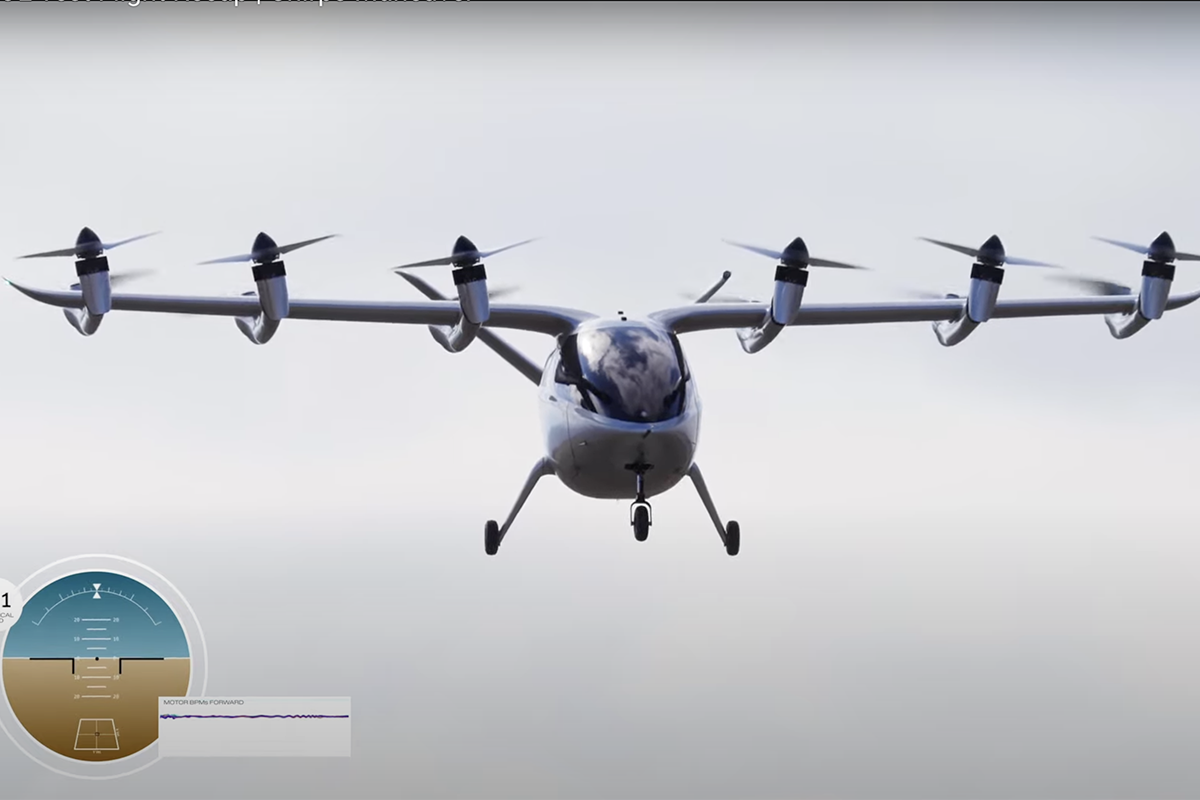Watch: Video Reveals Archer eVTOL Flight Tests
Engineers offer details on Archer Aviation’s electric vertical takeoff and landing (eVTOL) demonstrator.

Archer Aviation released new video Thursday of its Maker prototype performing a brief flight test at its California facility. [Courtesy: Archer Aviation]
Archer Aviation (NYSE:ACHR) released new video Thursday, offering a bit of insight into the California-based electric air taxi developer’s flight test campaign.
The video shows Archer’s Maker electric vertical takeoff and landing (eVTOL) prototype hovering above the company’s flight test facility in rural California. “Maker flew exceptionally well,” said Archer flight test lead Matt Deal in the video. “We flew for about three minutes at 35 feet.” These tests, Deal said, help engineers determine the stability characteristics of the aircraft.
Archer is just one of a handful of eVTOL developers in the U.S. and elsewhere that are currently flight testing prototypes for an entirely new form of aviation transportation. Although none have been type-certificated by aviation regulators, Archer and others have made significant progress.
Backed by United Airlines (NASDAQ: UAL)—Archer first flew Maker in an uncrewed flight last December. Last month, the company announced an expanded flight test program with a configuration that supports transition flight, from vertical to horizontal, which is widely recognized as one of the most difficult engineering challenges in eVTOL development.
Low-Altitude Hover Profile
The newly released video—which lasts less than a minute—shows Maker performing a low-altitude hover profile, as engineers and technicians gathered flight test data in a control room.
Metrics on the left side of the video appeared to show the aircraft’s vertical speed.
In a separate Archer video, guidance navigation and control (GNC) engineer Nihar Gandhi said Maker performed a set of maneuvers called “chirps”–also known as frequency sweeps—which he described as “what looks like a wiggle in a bunch of different axes.”
The maneuver offers engineers an opportunity to “learn so much about how the aircraft is behaving” within just a few seconds.
During flight tests for conventional rotorcraft, pitch frequency sweeps are used to help measure pitch response and stability margins in the longitudinal axis. Sometimes during flight testing of experimental rotorcraft pitch chirps can identify potentially divergent pitch responses.
The rich-content data will be analyzed by engineers, who will use it to “learn a lot about exactly what’s going on in the physics and the control system of the aircraft,” Gandhi said.
During upcoming flights, Deal said engineers plan to focus on “pedal turns and climb and descent envelope expansion.”
About the Aircraft
Archer says it remains on track for FAA type certification in time to launch an aerial ridesharing service in late 2024. Eventually, Archer and other eVTOL air taxi developers plan to scale up their airline operations, offering emission-free transportation to avoid urban traffic gridlock on the ground.
Maker features a tiltrotor propulsion design and a v-tail empennage. Fueled by lithium-ion batteries, Archer’s air taxi production model is expected to cruise at 130 knots with a range of 60 sm. Noise level is expected to be 45 decibels at 2,000 feet agl.

Sign-up for newsletters & special offers!
Get the latest FLYING stories & special offers delivered directly to your inbox






